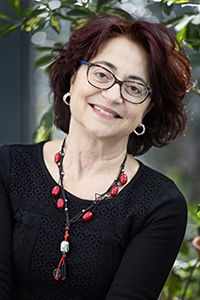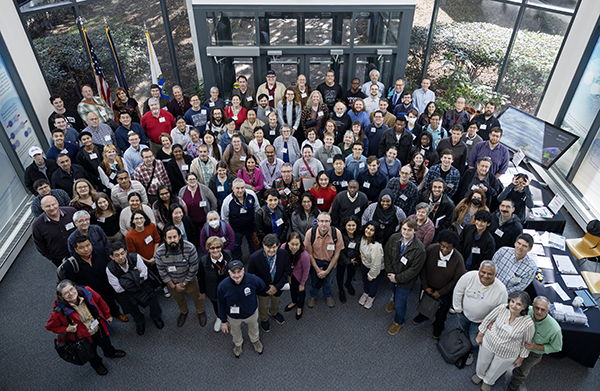- Indico style
- Indico style - inline minutes
- Indico style - numbered
- Indico style - numbered + minutes
- Indico Weeks View
CSAAPT/NCS-AAPT Fall 2024 Joint Semi-Virtual Meeting
→
US/Eastern
CEBAF Center, Thomas Jefferson National Accelerator Facility
CEBAF Center, Thomas Jefferson National Accelerator Facility
12000 Jefferson Ave.
Newport News, VA 23606
Description
Photo by Aileen Devlin
This Meeting is hosted by the Thomas Jefferson National Accelerator Facility,

with additional funding from:
- Department of Physics and the College of Science at Virginia Tech
- Departments of Physics and Astronomy at the University of Virginia
- Department of Physics, Computer Science and Engineering at Christopher Newport University
- Department of Physics at Virginia Commonwealth University
- Department of Physics at the College of William and Mary
- Department of Physics at Old Dominion University
- Department of Physics and Astronomy at Jame Madison University
- Department of Physics at Georgetown University
- Organization for Physics at Two-Year Colleges (OPTYCs)
Overview:
The Chesapeake and North Carolina Sections of the American Association of Physics Teachers (CSAAPT and NCS-AAPT) will be holding their Fall 2024 Meeting jointly on Saturday, October 19, 2024 at the Thomas Jefferson National Accelerator Facility (aka Jefferson Lab or JLab) in Newport News, VA.
No membership required!
You do not have to be an AAPT, CSAAPT, or NCS-AAPT member to attend. We welcome participation of all physics/science teachers and students in the region (DC, DE, MD, VA, NC and neighboring states) as well as anyone interested in physics education, or physics in general.
The semiannual CSAAPT/NCS-AAPT meetings are great forums to exchange ideas on novel teaching techniques and economical physics demonstrations, and to meet a fascinating cohort of physics education enthusiasts.
This meeting is semi-virtual. The in-person venue is the CEBAF Center at Jefferson Lab. See the Meeting Location page for details. The Meeting will be broadcast on Zoom so that people from afar (both presenters and attendees) can join in.
Lodging Support!
We have limited funds to provide up to $206 in lodging support to high school physics teachers. Support for community college faculty is also available from OPTYCs. Please see the Travel and Lodging Info page for details.
Jefferson Lab Security:
Please note that Jefferson Lab deals with radioactive material and other hazerdous substances so there are strict security protocols in place. To attend the meeting or to go on the Jefferson Lab tour, you must be registered with us so that Jefferson Lab knows that you are coming. You must also bring a valid government issued photo ID with you to enter the building where the meeting will take place.
Banquet:
There will be a get together for people arriving a day early in the evening of Friday, Oct. 18 from 6:00PM at
- Angelo's Steak and Pancake House
755 J. Clyde Morris Blvd.
Newport News, VA 23601
Phone: (757) 599-5727
This restaurant is a 3-min drive from the meeting hotel (Holiday Inn Express and Suites Newport News) and an 8-minute drive from Jefferon Lab.
The cost is $30/person. Please indicate on the registration form the number of people in your party if you are planning to join us. Payment info will be emailed to you together with the payment info for the registration fee.
Program:
Please see the TimeTable page for the complete program, and the Contribution List page for the complete list of titles and abstracts.
Invited Speaker:

- Dr. Patrizia Rossi (Jefferson Lab, Deputy Associate Director for Experimental Nuclear Physics)
Title: Jefferson Lab: a journey from quarks to matter
Abtract: Since time immemorial people are wondering what the world is made of. An ancient idea dating back to the Greeks is the system of four elements: earth, water, fire and air. Our understanding of nature has come a long way since then. We have learned that much of our world is made of the various atoms compiled in the periodic table of elements. We have also learned that atoms themselves are built from more fundamental pieces, named protons, neutrons and electrons, and that protons and neutrons in turn are made of more fundamental particles named quarks hold together by gluons. Researchers at Jefferson Lab study quarks and gluons using continuous beams of high-energy, polarized electrons. Research on the building blocks of matter will be presented along with the challenges posed by the nature of Quantum Chromodynamics, the theory which describes the characteristics and behavior of quarks and the peculiar force that binds them together.
Bio: Rossi, Patrizia joined Jefferson Lab as the Deputy Associate Director for Nuclear Physics in May 2012. She graduated in Physics from the University of Rome (Italy) in 1986. Following a fellowship at the Frascati National Laboratories (LNF) of INFN-Italy, she obtained a permanent position at LNF in 1990 where she is now "Research Director" (on leave). Since 2013 she has been a Research Professor at the George Washington University. She was the National co-spokesperson for the Italian collaboration at JLab from 2003 until May 2012. She is Managing Editor for “Reviews” and “Letters to the Editor” of the European Physical Journal A. She served as Member of the Helmholtz-Institute Mainz Scientific Council, Member of the GSI-FAIR Scientific Committee, and member of the US High Energy Physics Advisory Panel (HEPAP).Her professional service has also included Member of the GSI-FAIR Strategy Board and Member of the Nuclear Science Advisory Committee (NSAC). She has served as reviewer in many DOE, NSF and Laboratory Management Review Committees. In addition to her research at Jefferson Lab, she has carried out experiments at DESY, ESRF and LNF. Her most recent investigations are related to the study of the transverse momentum parton distribution functions for which she is co-spokesperson for several experiments. Her hardware activity has been focused on the construction of electromagnetic calorimeters, jet targets, monochromatic photon beams, and RICH detectors. Additionally, she has been an advisor to Undergraduate and PhD students. She has co-authored over 250 refereed journal papers and presented her works at 100+ conferences/workshops/seminars.
Tour of the Jefferson Lab Facilities:
- Must be 18 years or older to participate.
- The Morning Tour will be from 9:30AM to 11:30AM, and the Afternoon Tour from 1:30PM to 3:30PM.
- If you signed up for the Tour, you will receive an email from JLab Tour Coordinator, Mr. Daniel Akeredolu. Please read it carefully and respond to the online questionnaire.
Science Education Opportunities at Jefferson Lab:
- Presentation by the Science Education Department of Jefferson Lab
- Offered twice: 10:30AM to 11:15AM and 2:30PM to 3:15PM
College Fair and Poster Session:
- To run concurrently in the Atrium and Lobby of the CEBAF Center
- 9:30AM to 10:30AM and 1:30PM to 2:30PM
Contributed Talks/Demos/Posters:
We solicit contributions within the following parameters:
- 15-minute talk or demo (12 minute talk + 3-minute Q&A, both in-person and via Zoom)
Talk topic/demo can be anything pertaining to physics teaching - Research Poster (4'x3') on any physics topic by undergraduate and high school students
- To submit the title and abstract of your talk/demo/poster, please register first and then click on Call for Abstracts in the menu
- If you are a student submitting the title and abstract for a poster, please add your research advisor's name as a co-author of the poster
- The deadline to submit your title and abstract for talks and demos is midnight of Sunday, September 22, 2024.
- The deadline to submit your title and abstract for poster has been extended to midnight of Sunday, September 29, 2024.
- Contributors of talks/demos/posters will be issued certificates of presentation
Registration:
- In-person attendance:
- Please use the in-person attendance registration form on the Registration page,
- The deadline to register for in-person attendance is midnight of Sunday, September 29, 2024.
- In-person attendees are requested the following registration fees to cover meals and administrative costs:
- Instructors/faculty of 2-year and 4-year colleges/universities, employees of institutions/organizations/companies : $40
- K-12 Instructors, Retirees, Students, Guests : $30
- The registration fee is NOT payable upon registration. A link for you to directly pay the registration fee online will be emailed to you.
- Please use the in-person attendance registration form on the Registration page,
- Remote Attendance:
- Please use the Zoom attendance registration form on the Registration page,
- The deadline to register for remote attendance is midnight of Friday, October 18, 2024.
- There is no registration fee for remote (Zoom) attendance.
- Please note that the Zoom link for the meeting will not be made public and will only be emailed to registrants. The Zoom link will be sent to you in a Zoom or calendar invite, so please pay attention to what you are receiving in your email.
- Once on Zoom, please change your Zoom name to your full name followed by your affiliation in parentheses, e.g. Jane Doe (Thomas Jefferson High School). This is so that we can identify your presence for the purpose of issuing your certificates of attendance.
- Please use the Zoom attendance registration form on the Registration page,
- Certificate of Attendance/Presentation:
- Certificates of attendance/presentation will be issued to both in-person and virtual attendees/presenters.
- If you need a certificate of attendance and/or presentation, please register your name exactly as it should appear on your certificate(s). No nicknames or pseudonyms, please.
- A detailed program in pdf can be generated by clicking on the "PDF" button at the top of the "Timetable" page (once the timetable is available).
- Certificates of attendance/presentation will be issued to both in-person and virtual attendees/presenters.
Important Deadlines:
- Application for Lodging Support: midnight of Sunday, September 8, 2024
- Hotel room-block cutoff: midnight of Sunday, September 15, 2024
- Submission of talk and demo abstracts: midnight of Sunday, September 22, 2024
- Registration for in-person attendance, and submission of poster abstracts: midnight of Sunday, September 29, 2024
- Registration for virtual attendance: midnight of Friday, October 18, 2024
Organizational Committee:
Tatsu Takeuchi (CSAAPT President, Virginia Tech, VA)
Muge Karagoz (CSAAPT Vice President, MD)
Joe Heafner (NCS-AAPT President, NC)
Brittney VornDick (NCS-AAPT Past President, Durham Technical Community College, NC)
Marie Boer (Virginia Tech, VA)
Joshua Erlich (College of William and Mary, VA)
Ryan Fisher (Christopher Newport University, VA)
James Freericks (Georgetown University, DC)
Elena Kuchina (Virginia Peninsula Community College, VA)
Kris Lui (AAPT-OPTYCs, MD)
Carl Mungan (US Naval Academy, MD)
Felix Jaetae Seo (Hampton University, VA)
Jason Sterlace (James Madison University, VA)
Denise Wetli (Wake Technical Community College, NC)
Kent Yagi (University of Virginia, VA)
Participants
Adam LaMee
Adrian Tejada
Agastyya Kala
Alberto Accardi
Alejandro Satz
Ales Psaker
Alex Strassberg
Ananta Adhikari
Ando Ratsimbazafy
Andrea Rowanhill
Andrei Blinkouski
Andres Akamine
Arianna Lee
Arthur Baum
Brandon Lofton
Brittney VornDick
Carl Mungan
Carmen White
Caroline McElhenny
Charles Hyde
Charlotte Goebel
Christopher Eaton
Christopher Johnson
Daniel Shomaker
Darren Upton
David Parham
David Wright
Deonna Woolard
Desmond Villalba
Diane Green
Duane Deardorff
Eleazer Ekwue
Ethan Kantz
Francesca Viale
Fred Kashefi
Gregory MacDougall
Hampton Smith
Heather Hough
Ian Suh
Ingrid Marquez
Jake Raugh
James DeGrandis
James Freericks
James Stickler
Jan Fiala
Jason Czak
Jason Sterlace
Jason Tran
Jaylem Cheek
Jeanette Morin
Jeff Steele
Jeffrey Regester
Jency Sundararajan
Jeremy Adam
Joe Fehr
John Ochab
John Skrobiszewski
Jonathan Bennett
Joseph Swanson
Joshua Erlich
Jovy Regalado
Jyotsna Sau
Keagan Bell
Kent Yagi
Kris Lui
Landyn Blankenship
Laura Akesson
Leon Cole
Lilian Clairmont
Lori Gregory
Marija Raskovic
Marilyn F Bishop
Mario Gliozzi
Mark Esrick
Martin Kamela
Masamichi Noda
Matteo Cerutti
Michael Peterson
Mike Florek
Mohammad Nouristani
Muge Karagoz
Nicholas Hurtado
Nishchal Thapa Magar
Patrizia Rossi
Phil Nelson
Phuc Tran
Qi Lu
Ray Hodges
Rebecca Jaronski
Renee Reisenweaver
Richard Lindgren
Richard Ruiz
Ronald Freeman
Ryan Fisher
Samanthi Wickramarachchi
Sarah Overstreet
Sehriban Acikgoz
Shaima Bayiz Mawlood
Shella Condino
Shruti Shrestha
Sithy Maharoof
Stephanie Miller
Stephen Bueltmann
Tatlock Lauten
Tatsu Takeuchi
Tim Jones
Tony Mendez
Walter Jaronski
Wayne Manrakhan
Weiping Guo
Wendell Turner
William A. Tobias
William McNairy
Yee Kao
Yelena Prok
Zachary Marinelli
- +68

